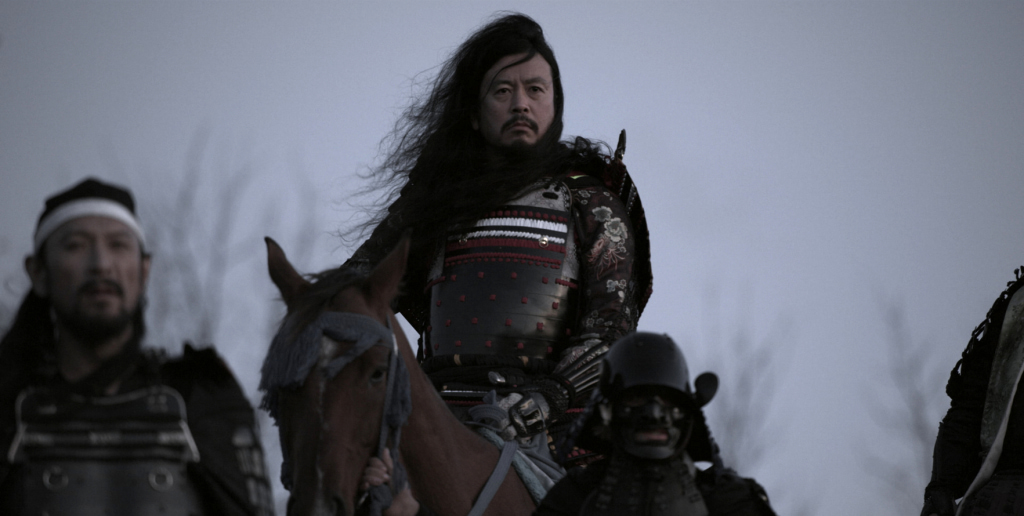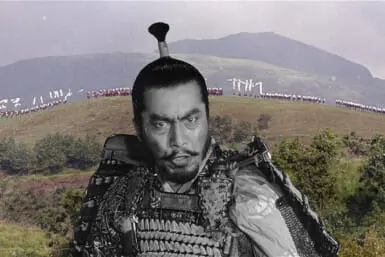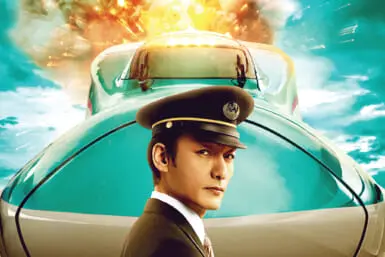One of the most enduring aspects of Japanese history is undoubtedly samurai culture. Dating back to feudal Japan, this class of people sat at the axis of military and nobility, where they were well-paid, held to high-esteem and often received favorable treatment from their respective ‘daimyo’, the magnates who held power over the land. Through a mixture of history and myths, martial arts and bushido, interest in samurai has stayed mainstream, from historical dramas known as ‘jidaigeki’, anime like Samurai Champloo, games such as Ghosts of Tsushima even to the somewhat problematic depictions of samurai featured in Hollywood films. Age of Samurai: Battle for Japan sits a little differently from the media above. Cream Productions’ historical military documentary series, it has the ability to set the story straight on the elusive samurai away from pop culture fantasies without pulling any of the dramatic reenacting punches.
Note: Spoilers ahead!
“Episode 1: ‘The Rise of Nobunaga'” begins with an intense mid-battle scene as samurai on both sides wield swords, bows and tanegashima (a matchlock gun) bring about chaos and blood. Here we meet Oda Nobunaga, whose precarious position as an heir distrusted by his own clan faces a 180-degree turn to become one of the most threatening daimyo of his time. The acting and short bursts of dialogue are intense, sometimes more than necessary, but this snippet sets the tone for the rest of the season when it comes to the reenactments. To this end, it’s not too different from what a seasoned viewer of Japanese drama or East Asian periodical drama, but the unaccustomed might find this style of acting slightly over-the-top.
As the narration continues, viewers are introduced one-by-one to subject matter experts Kazuhiro Marushima, Stephen Turnbull, David Spafford, Tomoko Kitagawa and more, who all fall in to provide their initial thoughts. This turn-based narrative juxtaposed against the drama becomes the main visual apparatus to fill in the documentary’s perspective on the warring states period. They paint determined unbiased strokes that providing context to the motivations and thoughts of the historical figures. To Cream Productions’ credit, inviting both foreign and Japanese historians gives the documentary a much more balanced approach.


Courtesy of Cream Productions
The later episodes pick up in speed with better pacing and reveal that Nobunaga’s time in the sun is short-lived due to the betrayal of his devoutly Buddhist general, Akechi Mitsuhide. The baton is passed to Toyotomi Hideyoshi whose rags to riches tale alone is enough to inspire any viewer to read more deeply on his back story. As the retelling progresses, scenes become more brutal and in some cases, a cause to shut one’s eyes as the audio is spine-chilling enough. Nowhere is this more prominent than the opening of “Episode 4: ‘Complete Control'” where a self-mutilation scene only becomes clear later on when it is repeated and explained to be Date Masamune removing a diseased right eye in a bid to rid himself of his “physical weakness”.
It is mainly within the fast-paced war scenes that one can appreciate the dynamic cinematography. Despite a cast that seems small, like the tight-knit band of warriors they attempt to portray, each looks very formidable through tightly shot scenes. One breakaway from these close shots is the panoramic scenes of the Battle of Sekigahara, the biggest and a highly important battle in Japanese feudal history. Between Hideyoshi loyalists and Tokugawa Ieyasu’s clan, a combined over 200,000 samurai were present and the camera zooms out to capture a sight to behold, the whole crowd and a panning shot of breathtakingly lush mountains and fields.


Courtesy of Cream Productions
Age of Samurai: Battle for Japan provides a great overview marked with insight from experts but viewers invested in truly understanding this period in time are encouraged to read up for a more comprehensive picture. Nevertheless, historical documentaries go a long way in making the study of history accessible so that we can learn from the mistakes of the people before us.
As the season draws to a close, the finishing lines of the narrators hint towards the cyclical nature of this period of the warring states. That even after witnessing the horrors of war in the most brutal, gruesome and widespread of ways, it was all ironically in the name of peace. In these last remarks on the transformation of samurai ‘from war, conflict and strategy to philosophy, duty and honor’ one is left to wonder if a second season that explores the next facet of the samurai isn’t on horizon.
Did you finish watching Age of Samurai: The Battle for Japan? Here’s What Age of Samurai Didn’t Tell You About Oda Nobunaga.









